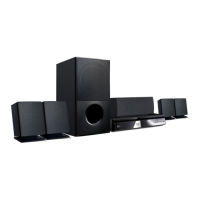2-13
DIGITAL DISPLAY & MEDIA TRAINING MASTER
What cables is the customer
using to connect the DVD?
NO
YES
Determine what cables the customer is using to connect the DVD to
the TV and if connected properly. Refer to OM for connections.
Tighten any loose cables. Make sure the customer is not connecting a
DVD to VCR. Copy protection can distort the picture on older VCR models.
Is the TV set to the
correct input?
NO
YES
Make sure the TV is on the correct input according to the
connections in use. Video when using composite, or component.
DVI when using DVI, and HDMI when using HDMI.
Is color fine when watching
multiple discs?
NO
YES
One disc displaying the issue is a problem with the disc.
Make sure the discs the customer is using are compatible with the DVD
by checking “playable discs” in the owners manual. Multiple discs
displaying the problem indicates a problem with the DVD HTS.
Is color fine when watching
a TV program?
NO
YES
If the cable or satellite programming is connected through another
input and the customer does not get color, the customer has a problem
with his television. If a TV program does have the color, the problem
may be the DVD HTS, the cables being used, or the TV itself.
Is color fine when the DVD is
connected to another TV?
NO
YES
Connect the DVD to another TV and play a disc. Good color during
disc play back indicates a problem with the first TV. Please refer to the
owners manual for instructions on how to connect the DVD to a TV.
If the DVD has a problem on the second TV, then see service
chart for service information.
Has the customer tried
another set of cables?
NO
Have the customer try another set of cables. A bad cable
can also cause video problems. Test the cable with another device to
the TV to also determine if the TV is bad. If the DVD is the problem,
please see service chart for service information.
3-2. Poor Color
The color is poor. Examples would be washed out colors, colors bleeding into one another, or a solid tint to
a screen.

